Battle for Cosmos. New Horizons
New planet was discovered 4 January 2010 of the year. Its size was defined as 3,878 of earth radius; orbital elements: semi-major axis - 0,0455 a. e., inclination - 89,76 °, orbital period - 3,2 earth days. The temperature on the surface of the planet is 1800 ° C.
The paradox of the situation is that the exoplanet Kepler-4b is located 1630 light years away from Earth in the constellation of the Dragon. In other words, we see this planet as it was 1630 years ago! It should be noted that the space observatory KEPLER discovered not the planet, but the flicker of a star, elusive by the human eye, around which the Kopler-4b exoplanet rotates, periodically shading its disk. This turned out to be quite enough for KEPLER to determine the presence of a planetary system (in total, over the last 3 of the year, the device detected 2300 of similar objects).
Gagarin's smile, photographs of the cosmic depths taken from the Hubble orbital telescope, moon rovers and the landing of Titan into the icy ocean, a fire-breathing team of thirty (!) Jet engines of the first stage of the H-1 rocket, an air crane of the rover Curiosity, radio communications 18,22 range, billion km - it is at such a distance from the Sun that the Voyager-1 probe is now (4 times as far as Pluto's orbit). The radio signal comes from there with a delay of 17 hours!
When meeting with the cosmonautics comes the understanding that most likely this is the true purpose of Mankind. To create the ultimate in beauty and complexity of the technique for the study of the Universe.
Russia returned to the scientific space
Just a few months before the sensational stories from Phobos-Grunt, from the Baikonur cosmodrome, the Zenit launch vehicle launched the Russian space telescope Spektr-R (better known as Radioastron) into the calculated orbit. Surely everyone has heard about the wonderful Hubble telescope, which for years 20 has been transmitting from the near-earth orbit amazing images of distant galaxies, quasars and star clusters. So, Radioastron is a thousand times more accurate than Hubble!
Despite the international status of the project, the Radioastron spacecraft is almost completely created in Russia. A group of Russian scientists and engineers NPO them. Lavochkin succeeded in the conditions of total underfunding and disregard for science to realize a unique project of a space observatory. It's a shame that this triumphal breakthrough in the field of space research did not completely hit the field of view of our media ... but the chronicle of the fall of Phobos-Grunt station was broadcast for days on all TV channels.
It is not by chance that the project is called international: “Radioastron” is a ground-space interferometer consisting of a space radio telescope installed on the Spektr-R device, as well as a network of ground-based radio telescopes: radio-telescopes are used as synchronous antennas in Efelsberg (Germany), Green-Bank (USA) and the giant 300-meter antenna of the Arecibo radio telescope on about. Puerto Rico. The cosmic component moves in a highly elliptical orbit with a distance of thousands of kilometers from the Earth. The result is a single radio telescope interferometer with 330 base thousands of kilometers! The resolution of Radioastron is so high that it allows you to distinguish objects that are visible at an angle of several microseconds.
And this is not the only space observatory created by Russian specialists in recent years - for example, in January 2009, the Kronas-Photon apparatus, designed for research of the Sun in the X-ray region of the spectrum, was successfully launched into near-earth orbit. Or the international project PAMELA (it is also an artificial Earth satellite Resurs-DK, 2006), designed to study the radiation belts of the Earth — Russian experts once again proved their highest professionalism.
At the same time, readers should not have the false impression that all problems were left behind and there is nowhere else to strive for. In no case can not dwell on the results achieved. NASA, the European Space Agency and the Japan Space Research Agency annually put into orbit space observatories and various scientific instruments: the Japanese Hinode satellite to study solar physics, the American 22 ton X-ray Observatory Chandra, the Compton gamma observatory, the infrared telescope Spitzer, the European orbiting telescopes Planck, XMM-Newton, Herschel ... by the end of this decade, NASA promises to launch a new Super Telescope, James Webb, into space to replace the outdated Hubble. diameter mirror 6,5 m and a solar panel the size of a tennis court.
Martian Chronicles
Recently, an extraordinary interest of NASA in the exploration of Mars has been noted, creating a sense of the imminent landing of astronauts on the Red Planet. Numerous vehicles along and across explored Mars, NASA specialists are interested in everything: orbital scouts conduct detailed surface mapping and measurements of the fields of the planet, descent vehicles and mars rovers study the geology and climatic conditions on the surface. A separate issue is the presence on Mars
Since 1996, NASA has organized 11 scientific expeditions to Mars (of which 3 ended in failure):
- Mars Global Serveyor (1996) - the automatic interplanetary station (AMS) 9 has been in Martian orbit for years, making it possible to gather as much information as possible about this distant mysterious world. After the completion of the mission to map the surface of Mars, the AMC went into repeater mode, ensuring the operation of the rovers.
- Mars Pathfinder (1996 g.) - “Pathfinder” worked on the surface of the 3 of the month, the rover was used for the first time during the mission.
- Mars Climate Orbiter (1999 g.) - an accident in Mars orbit. The Americans mixed up in the calculations of the unit of measurement (Newton and pound of force).
- Mars Polar Lander (1999 g.) - the station crashed while landing
- Deep Space 2 (1999 g.) - the third failure, AMC is lost under unexplained circumstances.
- Mars Odyssey (2001 g.) - was looking for traces of water from the Martian orbit. Found. Currently used as a repeater.
- Mars Exploration Rover A (2003 g.) And Mars Exploration Rover B (2003 g.) - two probes with Mars Spirit (MER-A) and Opportunity rovers (MER-B). "Spirit" stuck in the ground in the 2010 year, after which it failed. His twin still shows signs of life on the other side of the planet.
- Mars Reconnaissance Orbiter (2006) - “Martian orbital reconnaissance” surveys Martian landscapes with a high-resolution camera, selects the best places for future landings, explores the spectra of rocks, measures radiation fields. The mission is active.
- Phoenix (2007 g.) - "Phoenix" explored the polar regions of Mars, worked on the surface for less than a year.
- Mars Science Laboratory - 28 July 2012, the rover "Curiosity" began to perform the task. The 900-kilogram apparatus must crawl 19 km along the slopes of the Gale crater, determining the mineral composition of the Martian rocks.
In memory of the pioneers. The first vehicle that reached the surface of Mars was the AMC Mars-2, 27 in November 1971, which delivered the USSR pennant to the surface of the Red Planet.
A few days later, 2 December 1971 was the first ever soft landing on Mars. The interplanetary station Mars-3 for 14 seconds transmitted to Earth images of a distant cold world. Also, onboard the Soviet AMS Mars-3 was the world's first mars rover, the ProPM-M, a device for determining patency.
Next - only the stars.
Among the great achievements of Mankind are four starships that have overcome the pull of the Sun and have gone forever to infinity. From the point of view of the biological type of homo sapiens, hundreds of thousands of years are an insurmountable obstacle on the way to the stars. But for an immortal apparatus, floating in a void without friction and vibration, the chance to reach the stars is close to 100%. When - it does not matter, because time has stopped for him forever.
This story began 40 years ago, when they first began to prepare expeditions to explore the outer planets of the solar system, and it still continues: in 2006, the new Horizon unit entered the battle for space with the forces of nature - in 2015, it will spend several precious hours in the vicinity of Pluto, and then leave the limits of the solar system, becoming the fifth spaceship assembled by human hands
The gas giants beyond Mars’s orbit are strikingly different from the terrestrial planets, and deep space places very different requirements for astronautics: we need even higher speeds and nuclear power sources on board the AMC. At a distance of billions of kilometers from Earth, there is an acute problem of ensuring stable communication (at present it has been successfully solved). For many years, fragile instruments must withstand the brutal cold and deadly streams of cosmic radiation. Ensuring the reliability of such space probes is achieved by unprecedented control measures at all stages of preparation for flight.
The absence of suitable space engines imposes severe restrictions on the flight paths to the outer planets - the speed is increased due to the “interplanetary billiard” - gravitational maneuvers in the vicinity of celestial bodies. Woe to the scientific team who made a mistake in calculations in 0,01%: the automatic interplanetary station will pass at a distance of 200 thousands of kilometers from the calculated rendezvous point with Jupiter and deviate forever in the other direction, turning into space junk. In addition, the flight should be organized so that the probe, if possible, passed alongside the satellites of the giant planets and collected as much information as possible.
Probe "Pioneer 10" (launch 2 March 1972 g.) Was a real pioneer. Despite the fears of some scientists, he successfully crossed the Asteroid Belt and first explored the environs of Jupiter, proving that the gas giant emits 2,5 times more energy than it receives from the Sun. The powerful gravity of Jupiter changed the trajectory of the probe and threw it away with such force that the Pioneer-10 forever left the solar system. Communication with AMC was interrupted in 2003, at a distance of 12 billion km from Earth. Through 2 a million years, "Pioneer 10" will take place near Aldebaran.
“Pioneer 11” (launch of 6 on April 1973) turned out to be even more courageous researcher: in December 1974 it passed at a distance of 40 thousand km from the upper edge of Jupiter’s clouds and, having received an accelerating momentum, through 5 years it reached Saturn, passing clear pictures of a furiously rotating giant and his famous rings. The latest telemetry data from Pioneer 11 was obtained in 1995 — the AMS was already far beyond the orbit of Pluto, heading towards the constellation Shield.
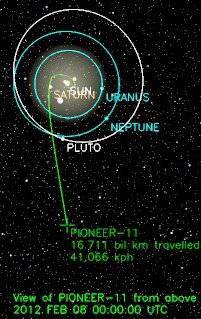
The success of the Pioneer missions allowed for even more daring expeditions to the outskirts of the solar system — the “parade of planets” in the 80s allowed a single expedition to visit all the outer planets gathered in a narrow sector of the sky at once. A unique opportunity was used without delay - in August-September of 1977, two automatic interplanetary stations "Voyager" set off for an eternity-long flight. The trajectory of the Voyagers flight was laid out in such a way that after a successful visit to Jupiter and Saturn, it was possible to continue the flight according to the expanded program with a visit to Uranus and Neptune.
After researching Jupiter and his large satellites, Voyager 1 went to meet Saturn. Several years ago, the probe "Pioneer 11" discovered the dense atmosphere of Titan, which undoubtedly interested specialists - it was decided to investigate in detail the largest satellite of Saturn. "Voyager-1" in a U-turn deviated from the course and approached Titan. Alas, a sharp manner put an end to further exploration of the planets - Saturn's gravity sent "Voyager-1" in a different way at a speed of 17 km / s.
Voyager 1 is currently the furthest from Earth and the fastest object ever created by man. In September, 2012 g. "Voyager-1" was at a distance of 18,225 billion km from the Sun, i.e. 121 times farther than Earth! Despite the gigantic distance and 35 years of continuous operation, a steady relationship is still maintained with AMC, Voyager-1 was reprogrammed and began studying the interstellar medium. December 13 2010 probe entered a zone in which there is no solar wind (the flow of charged particles from the sun), and its instruments recorded a sharp increase in cosmic radiation - "Voyager 1" reached the boundaries of the solar system. Voyager-1 made its last memorable picture “Family Portrait” out of unimaginable cosmic distances - the researchers saw the impressive view of the Solar System from the outside. The Earth looks especially fantastic - a pale blue dot the size of a pixel 0,12, lost in the infinite Cosmos.
The energy of radioisotope thermogenerators is enough for 20 years, but every day it’s harder for the photosensitive sensor to find the dim Sun compared to other stars - there is a possibility that the probe will not be able to orient the antenna in the direction of the Earth soon. But before falling asleep forever, Voyager-1 should try to tell more about the properties of the interstellar medium.
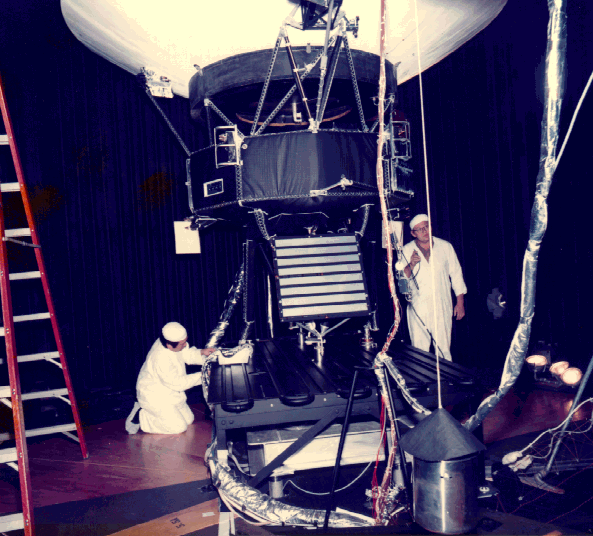
The second "Voyager" after a short rendezvous with Jupiter and Saturn, a little "wandered" in the solar system, visiting Uranus and Neptune. Tens of years of waiting and only a few hours to get acquainted with the distant icy worlds - what an injustice! Paradoxically, the lateness of Voyager 2 to the point of least distance from Neptune, compared to the estimated time, was 1,4 seconds, the deviation from the calculated orbit of the entire 30 km.
The 23-watt Voyager-2 transmitter signal after the 14-hour delay reaches Earth with an energy of 0,3 billionths of a trillionth of a watt. Such an incredible figure should not be misleading - for example, the energy that all radio telescopes have received during the years of existence of the radar is not enough to heat a glass of water at one millionth of a degree! The sensitivity of modern astronomical instruments is simply amazing - despite the tiny transmitter power of the Voyager 2 and 14 billion km. space, remote space communications antennas still receive telemetry data at a speed of 160 bits per second from the probe.
After 40 thousands of years, Voyager 2 will be in the vicinity of the star Ross 248 in the constellation Andromeda, through 300 thousands of years the probe at a distance of 4 s light years will fly past Sirius. After a million years, the Voyager corps will be bent by cosmic particles, but the probe that has fallen asleep forever will continue its endless wandering around the Galaxy. According to scientists, it will exist in space for at least 1 a billion years and, perhaps, by that time will remain the only monument of human civilization.
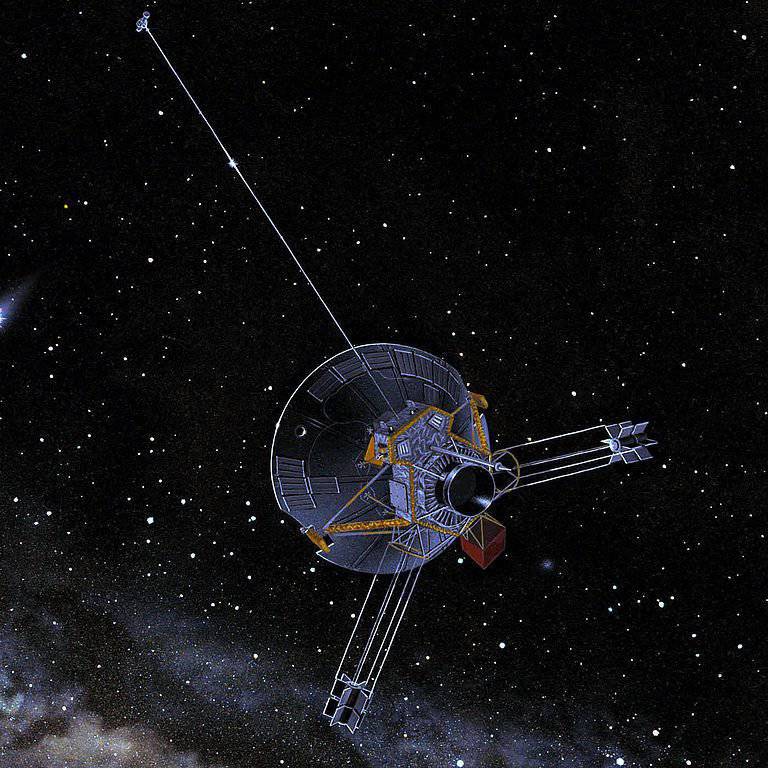
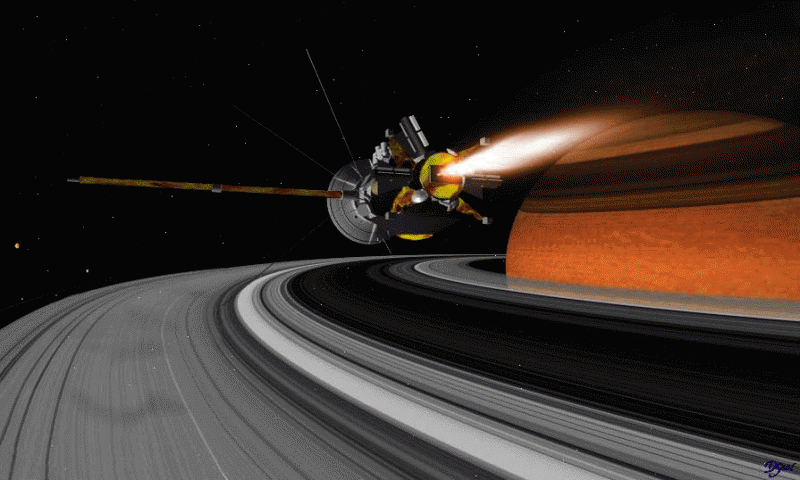
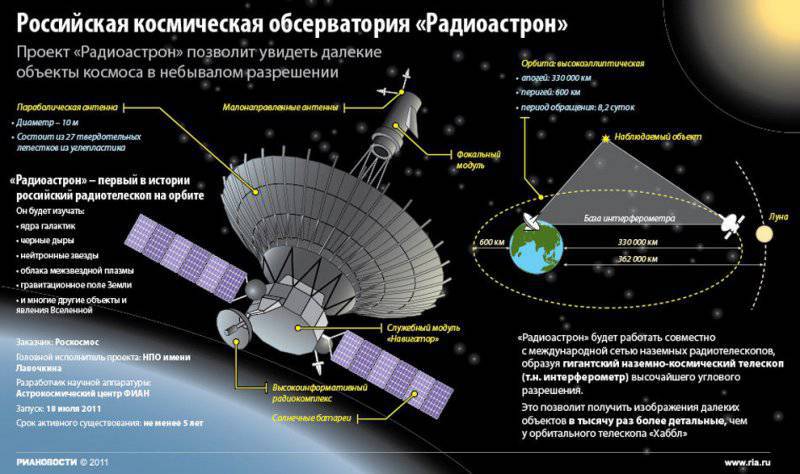
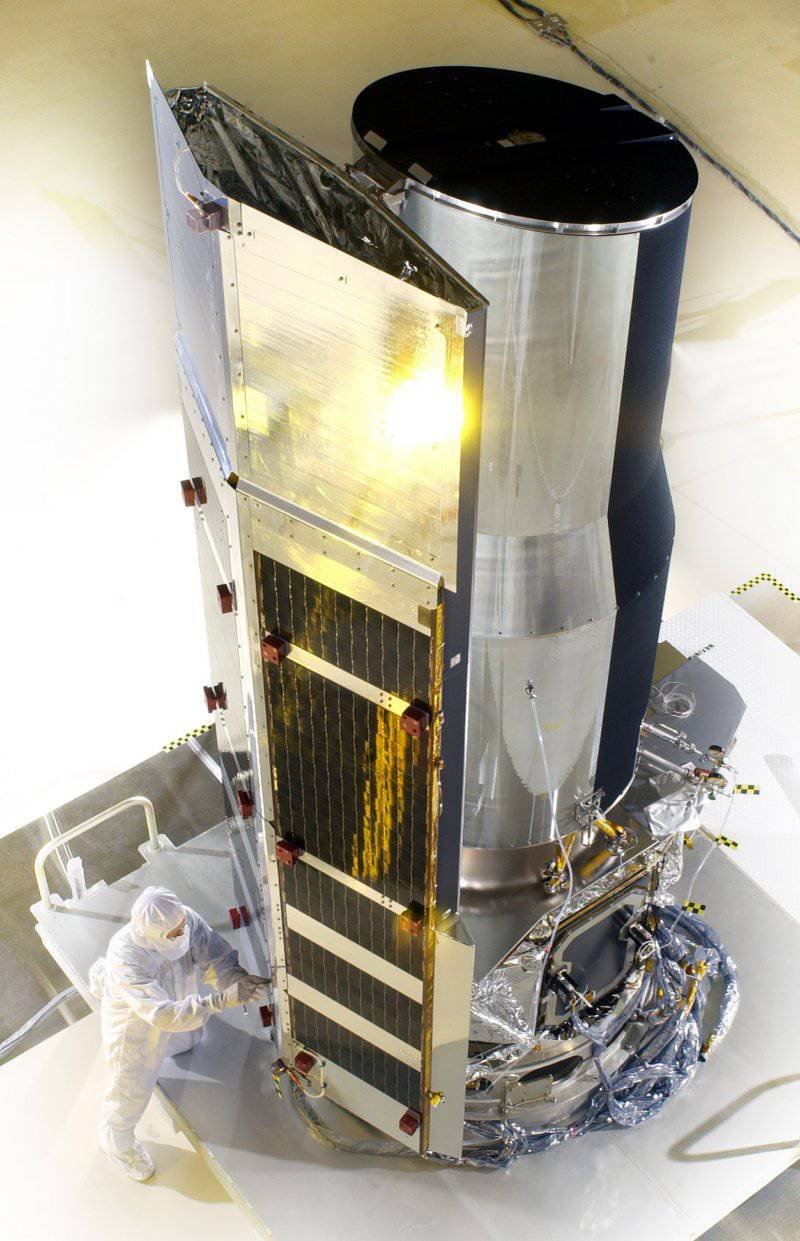
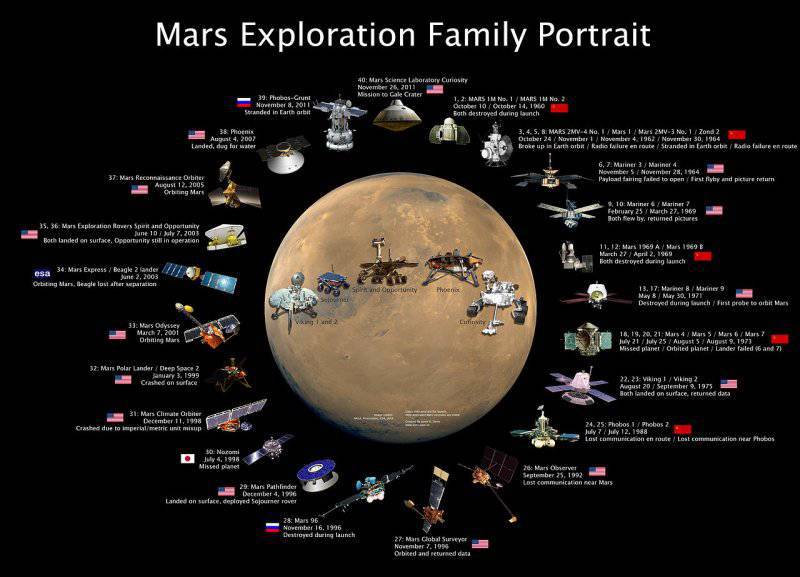
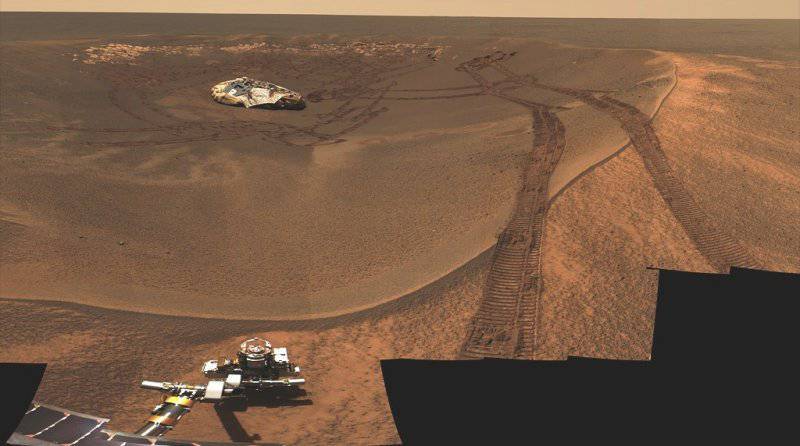
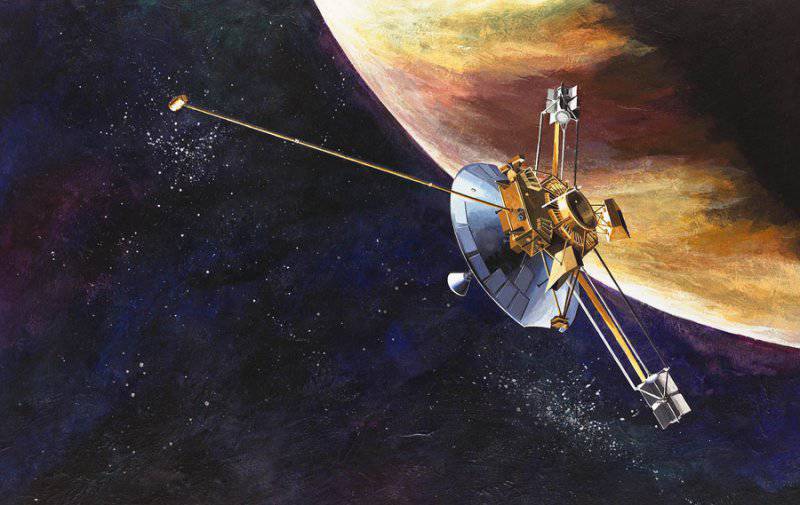
Information